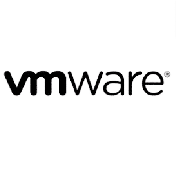Seminarinhalt
This course is an extensive introduction to HPE NonStop Servers and to the system software that makes them reliable, scalable, open, and fast. Topics also include NonStop Server application, database, networking, security, and operations environment topics and is the foundation and prerequisite for most other NonStop courses. The course is 60 percent lecture and 40 percent hands-on labs using HPE Integrity NonStop servers.
After you successfully complete this course, expect to be able to:
After you successfully complete this course, expect to be able to:
- Understand the unique capabilities of HPE NonStop servers
- Understand how availability, data integrity, high performance, and flexibility are assured with HPE Integrity NonStop servers
- Learn the concepts and facilities for application development and management, database and system management, networking, and security
- Learn how to use the full capabilities of your system through hands-on lab exer
Programm
Course Overview
Introduction to HPE NonStop Systems
NonStop Technical Library
NonStop Operating System
Guardian Environment
The Open System Services (OSS) Environment
Requesters and Servers
Pathway Application Environment
Application Services
Application Development Environments
Database Management
NonStop TMF and RDF
NonStop Server Hardware Architecture
NonStop Server System Management
Security
Networking and Data Communications
Information Sources and Education Planning
- History and general characteristics of HPE NonStop servers
- Application areas where NonStop servers are commonly used
- Fault-tolerant operating system
- Introduce the Guardian and OSS user environments
Introduction to HPE NonStop Systems
- History and general characteristics of HPE NonStop servers
- Application areas where NonStop servers are commonly used
- Fault-tolerant operating system
- Introduce the Guardian and OSS user environments
NonStop Technical Library
- Accessing the NonStop Technical Library (NTL)
- Browsing and searching to find documents and information
- NonStop OS release, release version, and release version update
- Lab
NonStop Operating System
- Basic characteristics and functions of the NonStop OS
- Differentiate between a process and a program
- Why a message-based operating system?
- Major functions of the NonStop OS file and message systems
- Process pairs role in ensuring fault tolerance
Guardian Environment
- Guardian user IDs
- Accessing the NonStop server
- Managing the Guardian user environment
- Guardian file system
- TACL commands
- Labs
The Open System Services (OSS) Environment
- OSS definition, file system, types, and security
- NonStop facilities and tools based on OSS
- Guardian, OSS, and shared APIs
- Guardian and OSS text files
- Labs
Requesters and Servers
- The primary goal and OLTP requirements
- Application modularity basic design principle and advantages
- Pathway and the requester-server model
- Requester-server approach
- Lab
Pathway Application Environment
- The Pathway solution and components
- NonStop TS/MP and Pathway/iTS components
- Terminal Control Program (TCP)
- Non-TCP and RSC client access to Pathway servers
- iTP WebServer definition and processing modes
- Lab
Application Services
- Transaction processing environments available on NonStop servers
- Core services for applications on NonStop servers
- Service-Oriented Architecture definition, characteristics, and benefits
- SOA and the HPE NonStop server
Application Development Environments
- Tools and components
- HPE Enterprise Toolkit (ETK) — NonStop edition
- NonStop Development Environment for Eclipse (NSDEE)
- Visual Inspect
- Code coverage tools
- Emulation, accelerated, and native modes of operation
Database Management
- Relational database concepts
- Database file structures and terminology
- Relational databases available on NonStop servers
- Enscribe Database Record Manager
- NonStop SQL/MP and NonStop SQL/MX
- Labs
NonStop TMF and RDF
- Major threats to OLTP data integrity
- ACID properties of online transactions
- How Transaction Management Facility (TMF) protects data integrity
- Criteria for placing transaction delimiters in application code
- Remote Database Facility (RDF) functions and components
- NonStop AutoTMF and NonStop AutoSynch
- Lab
NonStop Server Hardware Architecture
- HPE NonStop Multi-core Architecture
- HPE NonStop Value Architecture
- HPE NonStop Advanced Architecture
- HPE Integrity NonStop NS-series and NB-series
- HPE Integrity NonStop X BladeSystem (NonStop X)
- Hardware fault tolerance
NonStop Server System Management
- NonStop server manageability strategy
- Element and enterprise management
- Problem detection and response tools
- HPE Systems Insight Manager (SIM) and NonStop plugins
- NonStop server system management issues
- What is different about managing a NonStop server?
- Labs
Security
- Basic security protection in the Guardian environment
- Security facilities in the OSS environment
- Safeguard software and auditing
- Additional HPE security products
Networking and Data Communications
- Networking requirements and connecting NonStop systems
- Features and functions of Expand networking software
- Industry-wide networking protocols
- Communications hardware available for NonStop servers
Information Sources and Education Planning
- Sources of information on NonStop servers and software
- Useful NonStop web sites
- Connect - International HPE Users’ Group and regional user groups
- NonStop professional services and support programs
Zielgruppen
- Application designers and developers
- System managers and network managers
- Data communications programmers
- Technical support personnel
Vorkenntnisse
Knowledge of basic computer and IT concepts


